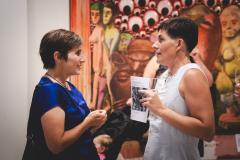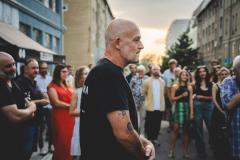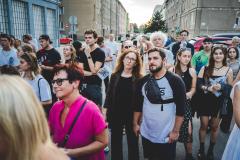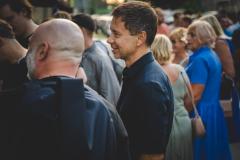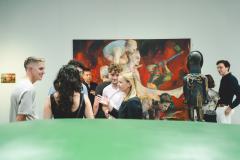
The term ‘Flotsam & Jetsam’ refers in English to debris or ‘Flotsam’ found in the sea that was not deliberately thrown overboard, often as the result of a shipwreck or accident, and debris ‘Jetsam’ that was deliberately thrown overboard by a crew of a ship in distress, most often to lighten the ship’s load. A sense of distress and cultural off-loading is certainly the central tenant in the current offering at the Telegraph Gallery by British artist Jake Chapman who in recent years has tackled not only the remembered legacy of his own collaborative work with his brother Dinos Chapman in the 1990s but also the cultural memory and projection of a now-defunct 1960s counterculture and humanities immanent existential collapse.
In the central gallery stands a communist era Trabant, its engine running idle at set times during the day, filling the car’s interior with dense exhaust fumes, gassing two shop mannequins, endlessly, forever. Embellished with quantum diagrams, this emblem of the ‘masses’ is surrounded by détourned May ’68 posters and modified smiley banners alongside a series of new Yoga inspired paintings and wood carvings featuring Neo-Liberalithic Era deities, totem masks, and a mutilated snowman. The Flotsam and Jetsam of our contemporary culture and accelerationist future combined.
Jake Chapman first came to prominence in the international art scene in the early 1990s in London as part of the YBA (Young British Artists) movement. Working in collaboration with his brother Dinos Chapman from 1991, the duo made a series of iconic works together, including large fibreglass models of deformed children, détourned original etchings by Francisco Goya and William Hogarth, a series of ‘improved’ Adolf Hitler watercolours and a giant rendition of Hell with modified and mutilated toy soldiers, described by art critic Brian Sewell as the first great artwork of the twenty-first century. Since 2020, the brothers have gone their separate ways.
Curated by Mark Sanders













